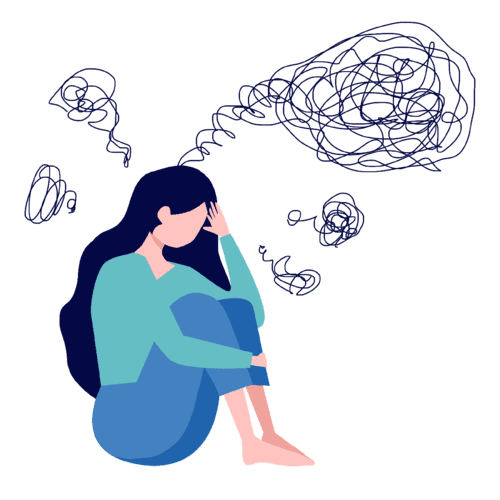Harm OCD Assessment
Free Harm OCD Assessment

What is Harm OCD Assessment?
Harm OCD assessment is a diagnostic process used by mental health professionals to evaluate individuals who may be experiencing Harm Obsessive-Compulsive Disorder (OCD). It involves a thorough examination of a person’s thoughts, feelings, and behaviors to determine if they exhibit persistent, distressing, and intrusive obsessions related to causing harm to others or themselves. Assessments typically include interviews, questionnaires, and psychological evaluations to differentiate Harm OCD from other mental health conditions. This evaluation aids in devising an appropriate treatment plan, often involving cognitive-behavioral therapy and medication, to help individuals manage their obsessive thoughts and compulsive behaviors, ultimately improving their quality of life.
Who can benefit from this Harm OCD Assessment?
The Harm OCD Assessment can be beneficial for individuals who suspect they may be struggling with Harm Obsessive-Compulsive Disorder (OCD). This assessment is designed to help those who experience intrusive, distressing thoughts or fears of causing harm to themselves or others, leading to compulsive behaviors aimed at preventing harm. It can aid individuals in identifying and understanding the presence and severity of Harm OCD symptoms, allowing them to seek appropriate support and treatment. Additionally, loved ones and mental health professionals may also benefit from this assessment as it provides insights into the individual’s condition, enabling more informed discussions and treatment planning for better mental health outcomes.
Harm OCD Assessment Accuracy
Assessing Harm OCD, a subtype of Obsessive-Compulsive Disorder (OCD), can be challenging. Diagnostic accuracy relies on thorough clinical evaluation by mental health professionals. Accurate assessment involves analyzing the nature and intensity of obsessions related to harm, the compulsions performed in response, and their impact on daily life. It’s crucial to differentiate Harm OCD from genuine violent tendencies. While assessment tools like structured interviews and self-report questionnaires can aid in diagnosis, they should complement, not replace, clinical judgment. Accurate diagnosis is essential for tailoring effective treatments, such as cognitive-behavioral therapy and, if necessary, medication, to alleviate symptoms and improve the patient’s quality of life.
Types of Harm OCD Assessment
Clinical Interviews:
Mental health professionals, such as psychologists or psychiatrists, conduct clinical interviews to assess the presence and severity of Harm OCD symptoms. They gather information about the nature of obsessions, triggers, compulsive behaviors, and their impact on daily life.
Structured Interviews:
Clinicians might use structured interviews such as the Yale-Brown Obsessive Compulsive Scale (Y-BOCS) to assess the severity of OCD symptoms, including Harm OCD. These interviews provide standardized questions and scales to rate the intensity of obsessions and compulsions.
Self-Report Questionnaires:
Various self-report questionnaires and assessment tools have been developed to evaluate the presence and severity of Harm OCD symptoms. These questionnaires include items related to the content of obsessions, the distress they cause, and the interference they have with daily functioning.
Psychological Assessments:
Psychologists may use psychological assessments to understand the cognitive and emotional aspects of Harm OCD. These assessments might include tests that evaluate cognitive functions, anxiety levels, and emotional regulation.
Behavioral Observation:
Observing the individual’s behavior in response to their obsessions can provide insights into the nature and severity of Harm OCD. This might involve observing rituals, avoidance behaviors, or other compulsive actions.
Functional Analysis:
A functional analysis helps identify triggers, thoughts, feelings, and behaviors associated with Harm OCD. It aims to understand the context in which obsessions arise and how compulsions are used to manage anxiety.
Handling Harm OCD Issues
Handling Harm OCD (Obsessive-Compulsive Disorder) can be challenging, but with the right strategies and support, it is possible to manage and alleviate its symptoms. Harm OCD is characterized by intrusive, distressing thoughts and obsessions related to causing harm to oneself or others. These thoughts often lead to compulsive behaviors aimed at preventing harm. Here are some steps to help you address Harm OCD issues:
- Educate Yourself: Understanding OCD, particularly Harm OCD, is the first step. Learn about the nature of obsessions and compulsions, and how they relate to anxiety disorders. Knowing that your thoughts are a part of the disorder and not indicative of your true desires is crucial.
- Seek Professional Help: Consult with a mental health professional, preferably one with experience in treating OCD. Cognitive-Behavioral Therapy (CBT), and specifically Exposure and Response Prevention (ERP), is often the most effective treatment for OCD. Medication, such as selective serotonin reuptake inhibitors (SSRIs), may also be recommended.
- Exposure and Response Prevention (ERP): This is a form of CBT tailored to OCD. It involves exposing yourself to the distressing thoughts or situations that trigger your obsessions and then refraining from performing the associated compulsions. Over time, this can help you learn to tolerate the anxiety without resorting to compulsive behavior.
- Mindfulness and Relaxation Techniques: Mindfulness meditation, deep breathing exercises, and progressive muscle relaxation can help reduce anxiety and manage the distress caused by intrusive thoughts.
- Keep a Journal: Track your thoughts, emotions, and behaviors related to Harm OCD. This can help identify patterns and triggers, which are essential for targeted treatment.
- Challenge Cognitive Distortions: Harm OCD often involves cognitive distortions or irrational beliefs. Work with a therapist to identify and challenge these distorted thoughts.
- Set Limits on Checking: Establish specific times during the day when you can check on your concerns. Gradually, with the help of a therapist, reduce the frequency of these checks.
- Self-Compassion: Practice self-compassion and remind yourself that you are not your thoughts. Be gentle with yourself and avoid self-criticism.
- Support System: Share your struggles with trusted friends or family members who can provide emotional support. Sometimes, just talking about your OCD with someone who understands can be therapeutic.
- Medication: If recommended by a mental health professional, consider medication as part of your treatment plan. Medications like SSRIs can help reduce anxiety and obsessive thoughts.
- Avoid Alcohol and Substance Abuse: These can exacerbate OCD symptoms, so it’s important to minimize or avoid their use.
- Self-Care: Prioritize self-care activities such as exercise, a balanced diet, and adequate sleep. These can help reduce overall anxiety levels.
- Maintain a Routine: Establishing a daily routine can provide structure and stability, which can be especially helpful during times of increased anxiety.
Remember that recovery from Harm OCD is often a gradual process. Be patient with yourself and stay committed to your treatment plan. It’s important to work closely with a mental health professional who can tailor strategies to your specific needs and monitor your progress. OCD can be managed, and many people with Harm OCD experience significant improvement in their symptoms with the right treatment and support.

